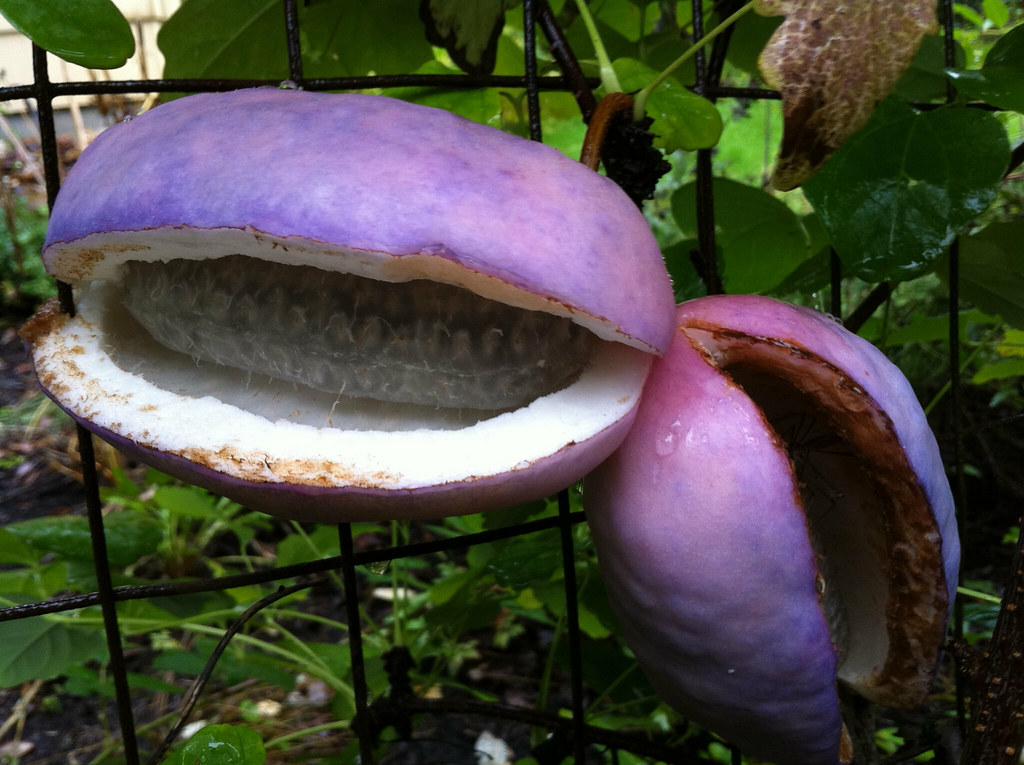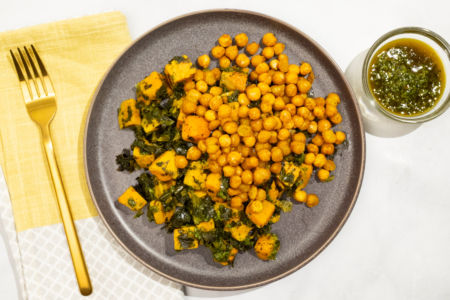The mysterious looking akebi fruit tastes as peculiar as it appears, and signifies the arrival of autumn. Read on to uncover the taste and culinary uses of this Japanese fruit.
What is Akebi?
Akebi (Akebia quinata), also known as the chocolate vine, five-leaf akebia, and five-leaf chocolate vine, is a climbing evergreen shrub native to East Asia, and invasive in the eastern United States. The fruit is oblong-shaped, around 5 inches in length, and hangs from the akebi plant vines. The color, size, and shape of fruit can vary depending on the variety, for instance, the unripe green fruit may mature into a purple, violet, gray, or purplish-gray color. The ripe fruit has a thick, semi-firm skin that feels soft when squeezed.
The leaves of akebi plant come in a bunch of five, and hence it’s also named five-leaf akebia. Moreover, the violet flowers of akebi are known to give off a mild chocolate fragrance that could be one of the reasons it’s called chocolate vine.

What does Akebi taste like?
Akebi flesh is soft, a little crunchy with a gelatinous fresh in which several black seeds are deeply embedded. Instead of removing all the seeds which would be a time-consuming task, many people consume the flesh along with the seeds. Akebi doesn’t have a profound taste, but offers a hint of sweetness coupled with a slightly bitter taste. The flavor can be described as similar to a squishy-textured lychee with very mild notes of melon, pear, and coconut. Seeds of akebi must not be chewed as they’re much bitter than the fruit itself.
How to Use Akebi in Recipes?

Akebi is a versatile fruit. All parts of the plant are used to make one thing or another. It’s considered an autumnal delicacy in Japan and is most often savored raw. The pulp is mixed with lemon juice and other ingredients to make semi-liquid drinks and smoothies. The fruit is also used in the wine industry. The skin of akebi is widely used as a vegetable in cooking, for instance it can be stuffed like a bitter gourd, sliced and fried, or cubed and curried to be transformed into a delicious meal.
Try stuffing your akebi skin with feta and cranberry as in our recipe for Stuffed Acorn Squash or try out any of the savory stuffings used in our recipes for Stuffed Mushroom Bites and Cheesy Stuffed Acorn Squash. The young stems of the plant are made into salads or pickled with salt. The vines of the plant are used for making baskets. Moreover, akebi fruit has been traditionally used in Chinese medicine to treat diseases. The seeds of the akebi plant are used for oil extraction which is further processed into vegetable oil for cooking.

Feature Image: cokolatetnica from Pixabay



